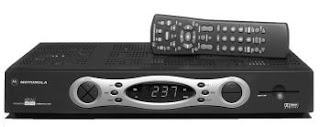
Set-top Box Costs Stabilizing, Spending to Grow
ABI Research’s newest study of the IP-STB market has revealed some noteworthy new dynamics. The report includes a SWOT analysis of the major IP-STB vendors worldwide which highlights Motorola’s recent emergence as a strong and prominent player.
“Motorola already had a good pedigree with STBs in general,” says principal analyst Michael Arden. “When Motorola acquired Kreatel – itself an IP-STB leader – it gained much greater entre into the European market and others outside its traditional North American base. In addition, the company owns proven technologies from its own and others’ video platforms.”
Motorola’s involvement with the ongoing rollout of telco TV services by Verizon has helped as well. Although AT&T is starting to pick up steam, Verizon will be the market driver in North America, which means Motorola is very well positioned in a rapidly growing market. This trend will accelerate over the next few months, as Verizon pushes its network into new regions.
Arden adds, “Because there are some ‘hybrid STB’ issues involved as well – IP combined with cable TV or with satellite – Motorola has some products that may allow it to get into the hybrid market more easily than some of its competitors.”
That is not to say that Motorola is alone in the field: there are a couple of others still in the running: ADB Global ranked second in the SWOT analysis because it has some very significant opportunities due to a very strong product lineup in the hybrid IP-DTT STB arena. The company is getting very good traction in Western Europe, where it has carved out a niche.
“In third place,” says Arden, “French vendor Sagem Communication ranked highly because the market in France is so hot right now. It isn’t the top-ranked company in any of the four SWOT categories, but it has a strong position among all of them.”
The analysis contained in ABI Research’s new study, “IP Video Set-Top Boxes”
IMS Research estimates that the average semiconductor bill of materials cost for set-top boxes dropped 37% from 2004 to 2006, going from $59 to $37. This precipitous drop was caused primarily by rapidly falling prices for MPEG-2 core decoders chips in preparation for the transition to MPEG-4 AVC (ITU-T H.264) – both in HD and SD segments. However, IMS Research is forecasting that due to a number of factors, this trend will change, and from 2007-2011 the overall average cost of a set-top box semiconductor BOM will stay near $41.
According to analyst Stephen Froehlich, “Overall spending by set-top box makers is likely to increase as set-top box volumes grow and the product mix shifts to more advanced set-top box designs. Specifically, significant amounts of new spending will go for more hard disk drives in more DVRs and also for no-new wire or wireless network interface modules on many of the boxes being installed in multi-set-top households.
The newly-published Worldwide Market for Semiconductors and Software in Set-top Boxes – 2007 Edition covers the market for the key hardware and software technologies contributing to the set-top box bill of materials, including core MPEG decoder chips, embedded processors, hard drives, front-ends, operating systems, and interactive middleware.Other interesting insights from the report include:
Linux will ship on more than 30% of set-tops by 2011 as increased processor performance eliminates the need for real-time operating systems.Open standard middleware will be running on 27% of installed STBs by the end of 2011.The rapid growth of Chinese cable and IPTV in 2006 resulted in NDS and other established conditional access vendors loosing market share to Tongfang.
